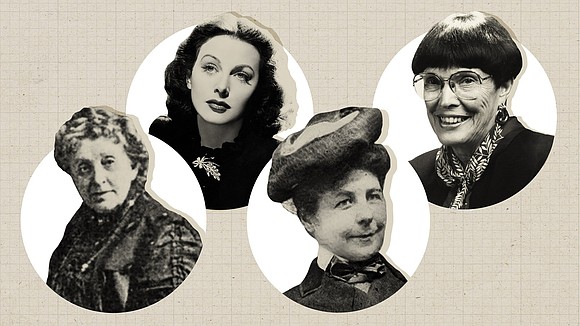Women inventors, long overlooked, are churning out more patents than ever
CNN/Stylemagazine.com Newswire | 3/26/2019, 11:23 a.m.

By Michelle Lou and Brandon Griggs, CNN Design: Max Pepper, CNN
(CNN) -- If you've used Wi-Fi, windshield wipers or a dishwasher -- and who hasn't? -- you have a woman to thank.
Male inventors such as Henry Ford, Nikola Tesla and Alexander Graham Bell get all the press. But this Women's History Month, it's important to note that women have been the masterminds behind some invaluable creations, too.
Take Radia Perlman. She holds more than 100 US patents and paved the way for the development of the internet. Or Beulah Louise Henry, known as "Lady Edison" after she obtained 49 patents for her inventions, including an ice cream freezer. Or Carolyn Bertozzi, named on 50 US patents, who invented her own field of study: bio-orthogonal chemistry. The list goes on.
In recent years, women have been churning out more inventions than ever, says the US Patent and Trademark Office.
But women are still seriously outnumbered by men when it comes to obtaining patents. The disparity is so severe that one recent study found -- based on current growth -- that it will take 118 years before the US reaches gender parity among inventors.
Women are gradually making inroads into this male-dominated fraternity.
In 1976, the number of patents that included a woman as an inventor was less than 4%.
By 2016, that figure had jumped to 21%, the US Patent and Trademark Office said in a report released in February.
However, women inventors made up only 12% of all inventors on patents granted in 2016 -- the most recent year for which data is available -- according to the patent office.
That disparity is not a good sign and even hurts the country's economy, says John Van Reenan, who co-authored the 2017 study about inventors.
"You can grow to some degree by copying other people, but what really moves the dial is when you can come out with great new ideas and innovation and new technology," he says.
The 2017 study deemed women as "lost Einsteins" -- people who could have created high-impact inventions if they had received early exposure to innovation and inventor role models.
"There are a lot of really talented girls who could've been inventors. We're losing out on a generation of Marie Curies," says Van Reenan.
The gender gap has nothing to do with girls' abilities. Instead, it's in part due to messages and societal expectations girls pick up on at a young age.
Researchers examined math test scores of third graders and found that boys and girls obtained similar scores.
"When they're young, there's basically no difference -- girls are doing just as well as boys," Van Reenan says. But "over time, that gap becomes bigger, presumably due to how they're taught and stereotypes."
Young girls internalize social cues about who is good at math and science from teachers, parents and the media, says Erin Hogeboom of the National Girls Collaborative Project, which works to encourage girls to pursue science, technology, engineering and mathematics (STEM) careers.
"It can be as subtle as educators asking a question in a STEM course and unintentionally calling on boys more than girls," Hogeboom says. "In mass media, we don't see a lot of women being championed and celebrated for their stem achievements."
Even if women enter the STEM field and invent something, they are still less likely to receive a patent than their male counterparts, a 2018 study from the Yale School of Management found.
The researchers analyzed millions of patent applications from 2001 to 2014 and found that women's patents were more likely to be rejected than men's. But that disparity dropped when patent application examiners encountered a woman whose name wasn't one that is typically associated with females.
Heather Metcalf is the chief research officer at the Association for Women in Science. She says that recruiting women into STEM fields isn't enough -- gender biases in the patent application process and higher education needs to addressed as well.
"Gender bias plays out in the selection of whose invention is worth patenting and what kinds of support we are offering people," Metcalf says.
She believes combating gender stereotypes is crucial to evening the playing field.
"There are stereotypes as to what a scientist looks like, what an inventor looks like and what an entrepreneur looks like -- and unfortunately they're all men," she says.
Experts agree that presenting female inventors as role models is important to showing young women that STEM is a possible career choice and in building their confidence.
So the next time someone mentions Thomas Edison, tell them about "Lady Edison" as well.







